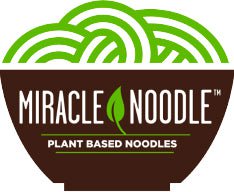Perhaps you read the Miracle Noodle blog entitled,
“What’s the best oil to cook with?”
But just in case you missed it, here’s a quick primer:
- cooking with vegetable oils: bad
- cooking with pure tropical fruit oils (coconut, palm): good
- cooking with olive oil: good (as long as it’s low heat)
- cooking with non-oxidized saturated fat (butter, lard, coconut oil): very good
When it comes to cooking with flour, the most important thing to take into account is the glycemic load of the flour, meaning, how much will your blood sugar level rise after eating a certain amount of whatever flour is used in the cooking process.
All foods, even cooking flours, begin breaking down as soon as they enter the mouth. Saliva contains digestive enzymes. The healthiest flours to cook with are not broken down quickly by the time they enter the small intestine (roughly half-way through the digestion process). The healthiest foods and flours to cook with break down slowly so that you can use the energy for a greater duration of time.
Wheat flour is probably the least healthiest to cook with. It breaks down rapidly into simple sugars and can raise blood sugar levels. When this happens, your pancreas releases insulin, the hormone that provides an escort for sugar in the blood to the cells.
But when you eat a lot of products that contain wheat flour, it’s possible that your cells become saturated with sugar and don’t want to accept any more it. Your cells become more resistant to insulin. Then your pancreas has to work harder and harder to pump more of it.
Toxic overload, system-wide inflammation can occur and a diagnosis of diabetes and a lifetime of monitoring blood sugar levels can result.
Care to avoid this scenario?
Choose healthier flours to cook with
Not all flours are created equal. Some flours have relatively low glycemic responses, meaning, they do not rapidly break down into simple sugars.
Love to bake but want to maintain healthy blood sugar levels?
Opt for some of the following flours instead of wheat flour:
- almond flour
- coconut flour
- buckwheat flour (especially good for those with Celiac Disease or gluten sensitivity)
- teff flour (an ancient grain, healthier than modern wheat)
- quinoa flour
Perhaps the two most ubiquitous, easy-to-find healthier flours listed above are almond and coconut.
And here’s one very healthy flour you may have never heard of…
Miracle Noodle sells a Japanese flour called ‘konjac glucomannan.’ Why is konjac healthy? It contains only 20 calories per serving. It has five grams of carbohydrates but also five grams of soluble fiber, which means ‘zero net carbs.’
Rather than using, say, 10 teaspoons of high-glycemic cornstarch to thicken something you are baking, you can use two teaspoons of konjac flour instead to cut down on calories and blood-sugar raising carbohydrates.
If you’re still baking with wheat and can’t give up your usual batch of cookies, add some konjac flour to the mix so you can cut down on the potentially belly-bloating gluten proteins found in wheat.
Konjac flour contains no sugar. It can even be dissolved in water as a fiber supplement to keep your digestive system regular. Order konjac flour online.


